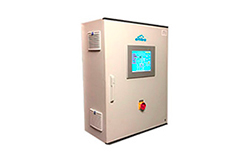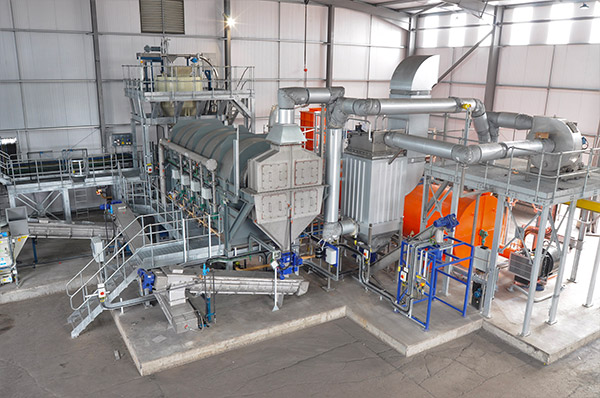
What is a VOC Abatement System?
In an adsorption process, the contaminated air or gas passes through an activated carbon bed where the contaminants are removed by adsorption or chemisorption and the treated gases are released into the atmosphere. The process of adsorption allows carbon air filters to filter organic chemicals (gases) from the air. The problem with the activated carbon bed is that over time, the gaseous pollutants increasingly fill up the activated carbon. Once the bed is saturated, the filter can no longer trap pollutants.
In fact, chemicals with a greater affinity for adsorption can displace those with lesser affinity, and the affinity of a given chemical for the sorbent is highly dependent on ambient conditions such as temperature and relative humidity.
Therefore, as conditions change, different chemicals may be released from the filter.
The activated carbon bed gradually becomes saturated. What shall you do?
Filter replacement
- Potential issues:
- Replacement is made too early:
- Filter un-saturated: higher filter consumption & process stopped unnecessarily ⇒ Higher operation cost than needed
- Replacement is made too late:
- Filter over saturated:
- Excess of emissions. IED regulation requires VOC continuous stack emissions monitoring for the manufacturer’s operating permit. ⇒ compliance issues / risk of penalties application by authorities ⇒ High risk in Plant risk assessment
- Excess of emissions. It can involve components that give rise to a pervasive odor ⇒ compliance issues (with same risks as before) + neighborhood complains and a risk of bad image for the Company.
- Loss of confidence in VOC’s removal units OR temptation to increase the filter size ⇒ Higher operation cost than needed
- VOC leakages: valuable solvents cannot be recovered ⇒ loss of money
- VOC leakages: can lead to infiltration of VOCs into buildings or enclosed facilities ⇒ hazardous situation to inhabitants or users of those facilities, particularly if the VOCs contain carcinogens such as benzene
- VOC leakages: Potential health effects of Volatile Organic Compounds exposure in the Air ⇒ HSE issues
- …
- Filter over saturated:
- Replacement is made too early:
- Solution: replace your filter exactly at the right time and before any saturation with using our proof dynamic VOC emission control and so, optimize your process treatment and your cost of operation.
How can you manage this?
This kind of measurements requires dedicated analytical instruments such as the Graphite 52M from ENVEA. We offer a turnkey solution (from the sampling to the reporting) and completely tailored to your needs. The system can be used for one point measurement (single VOC abatement system) as well as for parallel multiple tank filtration system measurements. The solution features:
- Portable analyzer Graphite 52M for spot measurements or online monitoring of a single VOC abatement tank (indoor use). Includes the sampling system and the heated line for sample transfer
- Rack analyzer Graphite 52M, integrated in fixed cabinet and optionally a shelter for outdoor use, plus sampling system, the heated line for sample transfer
- Rack analyzer Graphite 52M, integrated in fixed cabinet and shelter for outdoor use + multiplexing system for online monitoring of up to 4 VOC abatement tanks
- Optional:
WEX DAHS and software,
-
- connected with plant’s PLC (automate) for alarms and global control
- Not connected with a PLC, but offering global supervision and real-time alarms on filter saturation state directly in the Cloud. (for plant use or filter replacement contractors)
- also handling stack emission monitoring data for ELV control and environmental compliance
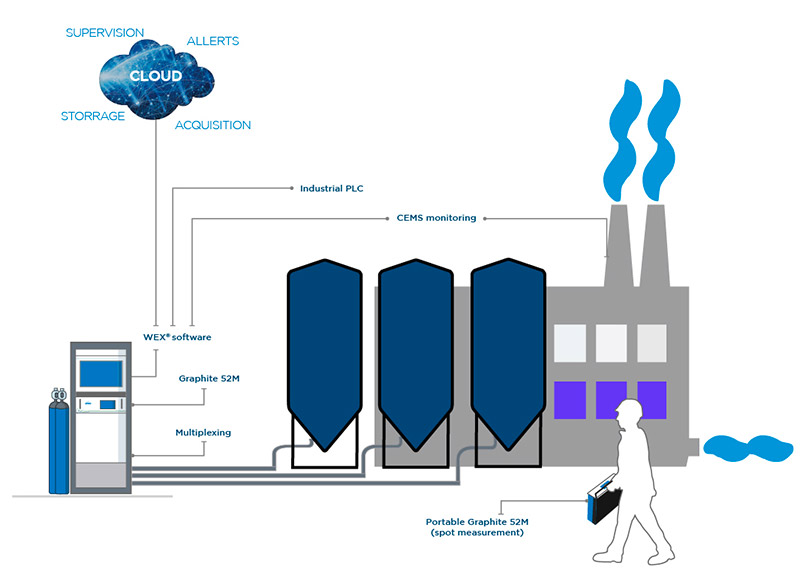
Benefits
- A Turnkey solution from the sampling to the reporting, based on QAL1 certified equipment
- Opportunity to cut the treatment cost by changing the filter at the right time
- Avoid VOC leakages
- Reduce the process stops and production losses
- Real time supervision in the cloud: Monitoring and control of equipment, display of alarms and faults, management of Emission Limit Values, real-time trend calculation
- Real time remote control of the efficiency of the installed abatement systems
- Improved reliability of the systems and earn customer confidence
- Cut the filter replacement costs
- Stack emission compliance
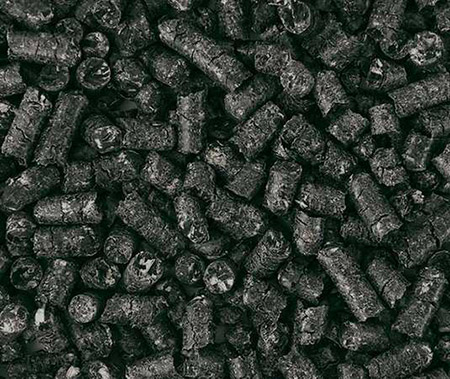
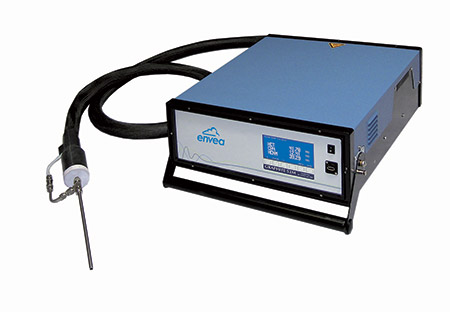
Contenu associé
Demande d'information
